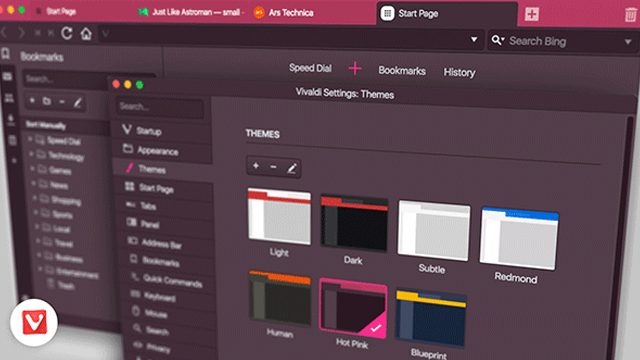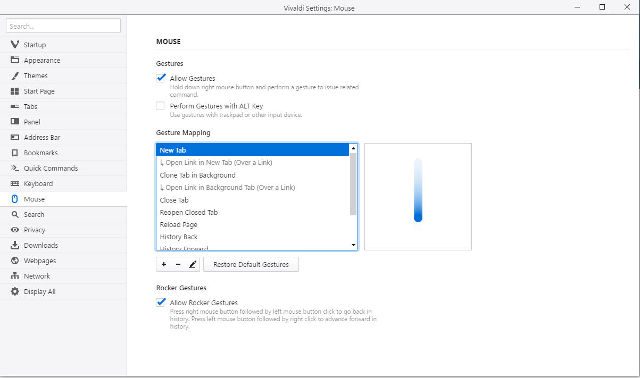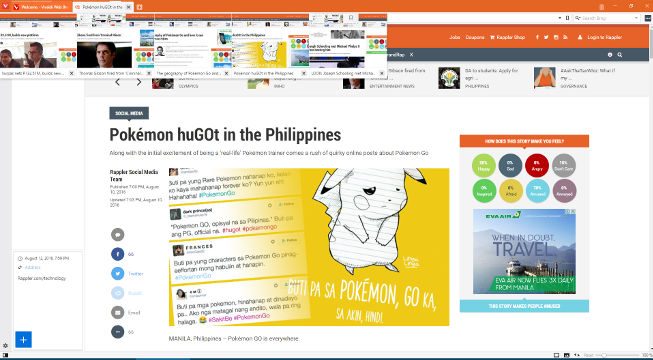SUMMARY
This is AI generated summarization, which may have errors. For context, always refer to the full article.

As a long-term Chrome and Firefox browser user, I’ve grown accustomed to adjusting my expectations when it came to browser I use.
The expectation one has with operating web browsers is one of compromise. If you don’t ask too many questions about the limitations of your browser, you’ll likely be pleased with how it operates, whether it’s Chrome, Edge, Firefox, Opera, or some other browser.
If you wanted to take better control of your browsing experience, however, there weren’t many browser options allowing for a wide range of customization and tweaking.
That is, until I heard about a browser called Vivaldi.

What is Vivaldi?
Vivaldi is a browser that allows for personalization on a scale not seen in other browsers.
Users can tweak the physical location of the address bar and tabs, as well as choose a specific background color for the browser. Users can even set up mouse gestures as commands the browser will follow.
Publicly launched as a stable release on April 6, version 1.3 of Vivaldi launched last August 11.
The update allowed users to create custom themes, allowing users to tweak the browser’s UI elements to their heart’s content. The browser also got further privacy features and added more default mouse gestures for users to play around with.

Feature-rich
Aside from customization options, Vivaldi touts itself as being feature-rich.
The browser has what it calls a speed dial option for visiting one’s favorite sites. It lets users annotate web pages and take notes within the browser itself.
Vivaldi also has features specific to tab and bookmark management. I can condense multiple tabs into a stacks of tabs and then choose a tab to open on each stack.

For example, I stacked 5 Rappler tabs together and can easily choose which one to view at any given time, in addition to separate stack for everything connected to Vivaldi.
Bookmarks are also searchable on Vivaldi, and you can open an entire folder of bookmarks with a couple of clicks.
Talking with Vivaldi’s head
Curious about Vivaldi’s feature-rich environment, I had short email discussion with Vivaldi’s head, former Opera CEO Jon von Tetzchner.
Von Tetzchner explained that Vivaldi was meant to empower users, whether they were power users, or common users seeking a browser they could control.

He explained: “We believe that the browser should adapt to you, not the other way around. Given the amount of time online, having easy to use and efficient methods to use the browser is needed. and what is efficient for some is not efficient for others. Our goal is to give you a browser that you feel is made with you in mind… and it is.”
Von Tetzchner added that Vivaldi was great for people looking for options, even if they didn’t want to play with everything the browser had to offer.
“For a lot of people it is not all the features on offer, but a selection of them. Many people think that the speed dials, tab stacks and keyboard shortcuts are what makes Vivaldi, but for others it is the fresh look, colors and maybe the ability to hide what you do not need when you do not need it. Or you love web panels. It is about you as a user and what you like.”
Better still, most Chrome extensions work with Vivaldi when you download them from the Chrome Web Store for use on the browser, meaning users who want to try Vivaldi can actually attempt to replicate their experience on Chrome with their own special personalizations.
Von Tetzchner explained extension providers were also lending their support to Vivaldi, with Vivaldi’s team working with extension makers to allow for better interoperability.
As a result, the community of Vivaldi users helps to better determine what they want out of the browser they’ve grown to love.
“Generally,” he said, ” we will continue to expand the feature set and flexibility based on the requirements of the user. What you want is what you get. That is what we strive for.”
Von Tetzchner also said he wants Vivaldi to “lead the way in innovation.”
Specifically, Vivaldi aims to “Innovate into the future, providing unique new ways to make the most useful browser in the world!”
Personally, as a heavy Internet user, I’m inclined to agree. Vivaldi is immeasurably useful, and I look forward to seeing what else it can do in the future. – Rappler.com
Add a comment
How does this make you feel?
There are no comments yet. Add your comment to start the conversation.